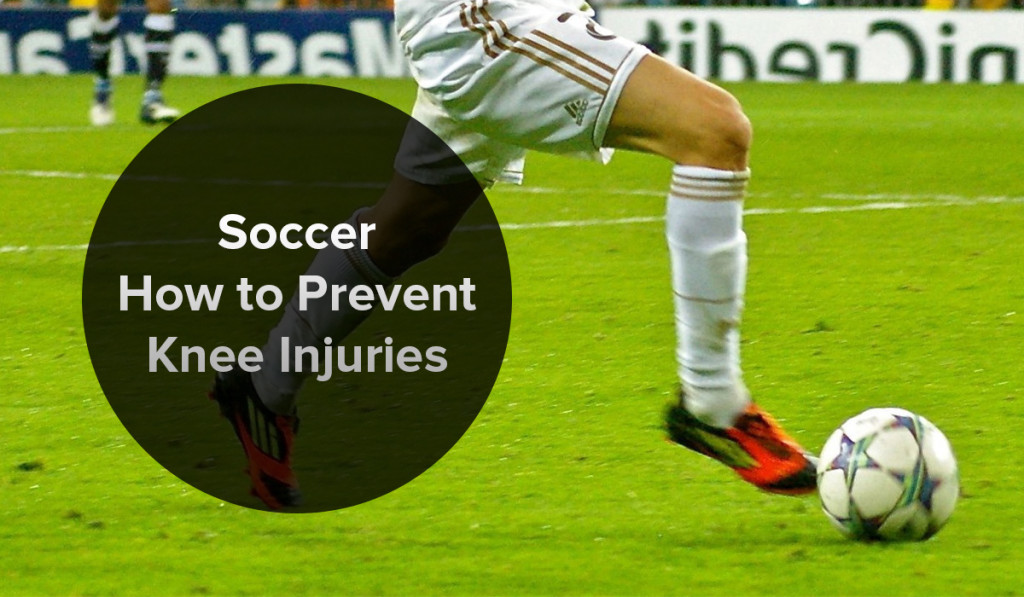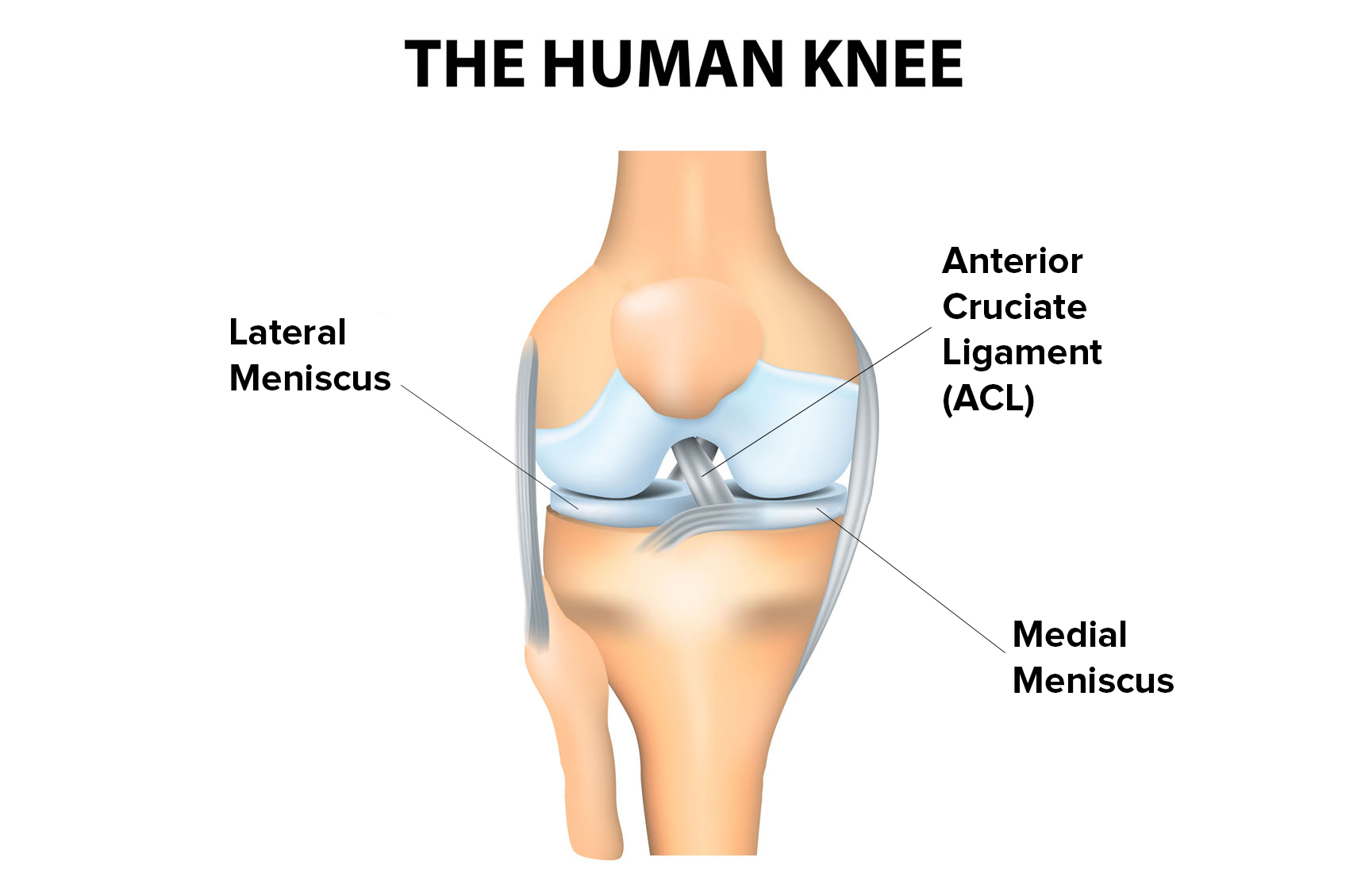Soccer – How to Prevent Knee Injuries

Soccer (also known as football) is an exciting and fast-paced game that requires teamwork, coordination, agility, and healthy knees. Unfortunately, soccer players have a higher-than-average risk of experiencing serious knee injuries because of the pivoting and quick direction changes required in the game [1]. The most common soccer injuries affect the lower body, and more specifically, the knee and ankle [2]. Here we focus on the most common types of knee injuries and how to reduce your risk.
The Risk of a Soccer Injury

Soccer is one of the world’s most popular sports – with 4% of the world’s population (approximately 265 million people) actively involved in the game as of 2006 [3]. With so many people playing the sport, soccer is a major contributor to knee injuries around the world.
Here are some knee statistics:
- Sprains and strains are the most common types of lower body injuries in soccer. Specifically, Anterior Cruciate Ligament (ACL) and meniscus tears (shown in the diagram above) are the most common types of knee injuries [4].
- Meniscus tears often happen at the same time as ACL tears or other knee injuries [5].
- Soccer has one of the highest injury rates for ACL tears for both male and female athletes, especially in young athletes ages 14–19 years old [6].
- Female athletes have the highest risk of ACL tears (3 to 5 times the risk of serious knee injury in comparison to male players) [7].
- ACL injuries can take professional athletes away from competitive play for 6-9 months [8].
Check out our blog about Kara Lang, one of Canada’s premium soccer players, and her struggle with ACL tears here.
ACL and Meniscus Tears
ACL and meniscus tears can put you on the bench for six months or longer. You may need surgery, but most injuries will at least require a rehabilitation program to help you fully regain strength and mobility in your knee [9].

The ACL and meniscus are often injured during the following movements [10]:
- Stopping, pivoting, or changing direction suddenly
- Decelerating when running (often combined with a change in direction)
- Landing incorrectly after a jump
- Colliding into another player
Since all of these movements are common when playing a sport like soccer, let’s look at how you can reduce your risk of injury while playing the game.
Soccer Injury Prevention
Here’s a few tips to help minimize your risk of injury [11]:
- Stay safe, healthy and active – Keeping our bodies healthy and active is one way to help ensure that our joints and muscles are working at their peak performance. Following a healthy diet and improving your core and leg muscle strength through an exercise or training program can help you stay on the top of your game!
- Warm up and cool down – Everyone from casual soccer players to elite athletes can help minimize their risk of injury by including a proper warm-up before games and practices and a cool down afterwards.
- Wear proper gear – Wearing appropriate footwear is extremely important for reducing your risk of injury in soccer. Soccer cleats are designed to help control fast paced movement, especially when it comes to cutting, pivoting and changing directions.
- Hydrate – Drink water regularly throughout the day and during games and practices. Dehydration can affect your ability to focus, which in turn can increase your risk of injury.
- Pay attention to your environment – Bad weather and poor field conditions can increase your risk of injury, so pay attention to your surroundings.
- Overuse injuries – You can help avoid overuse injuries by getting enough rest between games and practices. Listen to your body and take breaks when needed.
- Proper recovery – If you’ve experienced a knee injury, don’t start playing again until you’re fully recovered. According to the American Academy of Orthopaedic Surgeons, you should have full range of motion, normal strength, and no pain or swelling before returning to the field.
Click here for a great resource by Stop Sports Injuries on how to prevent soccer injuries. Since every athlete’s experience will be different, make sure to consult your doctor or physiotherapist with specific questions on how to prevent knee injuries on the field, especially if you’ve injured your knees in the past.
Interested in learning more about how to maintain healthy knees? Download your free eBook: A Guide to Healthy Knees!

Sources:
1 ) Grimm, Nathan L, et al. “Anterior Cruciate Ligament and Knee Injury Prevention Programs for Soccer Players: A Systematic Review and Meta-analysis.” American journal of sports medicine 43.8 (2015):2049-56. Web.
2) “Soccer Injury Prevention-OrthoInfo – AAOS.” Soccer Injury Prevention-OrthoInfo – AAOS. American Academy of Orthopaedic Surgeons, n.d. Web. 13 Jan. 2016.
3) “Big Count.” FIFA.com. FIFA, n.d. Web. 18 Jan. 2016. <http://www.fifa.com/worldfootball/bigcount/>.
4) “Become an Advocate for Sports Safety.” Soccer Injuries. Stop Sports Injuries, n.d. Web. 13 Jan. 2016. http://www.stopsportsinjuries.org/soccer-injury-prevention.aspx
5) “Meniscus Tears-OrthoInfo – AAOS.” Meniscus Tears-OrthoInfo – AAOS. American Academy of Orthopaedic Surgeons, n.d. Web. 18 Jan. 2016. <http://orthoinfo.aaos.org/topic.cfm?topic=a00358>.
6) Renstrom, P, et al. “Non-contact ACL injuries in female athletes: an International Olympic Committee current concepts statement.” British journal of sports medicine 42.6 (2008):394-412. Web.
7 ) Grimm, Nathan L, et al. “Anterior Cruciate Ligament and Knee Injury Prevention Programs for Soccer Players: A Systematic Review and Meta-analysis.” American journal of sports medicine 43.8 (2015):2049-56. Web.
8) Silvers, Holly Jacinda, and Bert R Mandelbaum. “Prevention of Anterior Cruciate Ligament Injury in the Female Athlete.” British Journal of Sports Medicine 41.Suppl 1 (2007): i52–i59. PMC. Web. 18 Jan. 2016.
9) “Anterior Cruciate Ligament (ACL) Injuries-OrthoInfo – AAOS.” Anterior Cruciate Ligament (ACL) Injuries-OrthoInfo – AAOS. American Academy of Orthopaedic Surgeons, n.d. Web. 18 Jan. 2016. <http://orthoinfo.aaos.org/topic.cfm?topic=a00549>.
10) Silvers, Holly Jacinda, and Bert R Mandelbaum. “Prevention of Anterior Cruciate Ligament Injury in the Female Athlete.” British Journal of Sports Medicine 41.Suppl 1 (2007): i52–i59. PMC. Web. 18 Jan. 2016.
11) “Soccer Injury Prevention-OrthoInfo – AAOS.” Soccer Injury Prevention-OrthoInfo – AAOS. American Academy of Orthopaedic Surgeons, n.d. Web. 13 Jan. 2016.